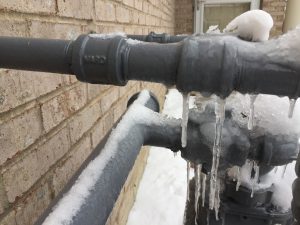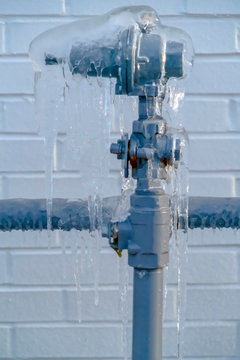Important Advice to Prevent Frozen Plumbing in Winter
Important Advice to Prevent Frozen Plumbing in Winter
Blog Article
What are your concepts about How to Prevent Your Pipes From Freezing?

Winter can wreak havoc on your pipes, especially by freezing pipelines. Here's how to stop it from occurring and what to do if it does.
Introduction
As temperature levels decline, the threat of icy pipelines boosts, potentially causing pricey fixings and water damage. Comprehending exactly how to stop icy pipelines is important for homeowners in cool climates.
Recognizing Icy Pipes
What causes pipelines to freeze?
Pipes ice up when subjected to temperature levels below 32 ° F (0 ° C) for extended periods. As water inside the pipes ices up, it increases, taxing the pipeline wall surfaces and possibly triggering them to rupture.
Dangers and damages
Frozen pipes can bring about supply of water disruptions, residential or commercial property damages, and costly fixings. Burst pipes can flood homes and trigger extensive architectural damages.
Indicators of Frozen Piping
Recognizing frozen pipelines early can stop them from rupturing.
Exactly how to determine icy pipelines
Look for reduced water flow from faucets, unusual odors or noises from pipes, and visible frost on exposed pipelines.
Prevention Tips
Protecting at risk pipelines
Wrap pipes in insulation sleeves or make use of warmth tape to shield them from freezing temperatures. Focus on pipelines in unheated or outside locations of the home.
Heating strategies
Maintain interior areas appropriately warmed, particularly areas with pipes. Open cupboard doors to allow cozy air to distribute around pipes under sinks.
Safeguarding Outside Plumbing
Garden hoses and outdoor faucets
Disconnect and drain pipes yard tubes before winter months. Mount frost-proof faucets or cover outdoor taps with insulated caps.
What to Do If Your Pipes Freeze
Immediate activities to take
If you presume icy pipes, keep faucets open to eliminate stress as the ice melts. Utilize a hairdryer or towels soaked in hot water to thaw pipes slowly.
Long-Term Solutions
Architectural adjustments
Think about rerouting pipes away from outside wall surfaces or unheated areas. Include extra insulation to attics, cellars, and crawl spaces.
Updating insulation
Invest in premium insulation for pipelines, attic rooms, and wall surfaces. Correct insulation aids maintain consistent temperatures and decreases the danger of icy pipes.
Verdict
Protecting against frozen pipes needs aggressive steps and quick feedbacks. By understanding the reasons, indicators, and safety nets, home owners can shield their pipes throughout winter.
6 Proven Ways to Prevent Frozen Pipes and Protect Your Home
Disconnect and Drain Garden Hoses
Before winter arrives, start by disconnecting your garden hoses and draining any remaining water. Close the shut-off valves that supply outdoor hose bibs and leave the outdoor faucet open to allow any residual water to drain. For extra protection, consider using faucet covers throughout the colder months. It’s also important to drain water from any sprinkler supply lines following the manufacturer’s directions.
Insulate Exposed Pipes
Insulating your pipes is an effective way to prevent freezing. Pipe insulation is readily available at home improvement stores and is relatively inexpensive. Pay close attention to pipes in unheated areas such as the attic, basement, crawl spaces, or garage. Apply foam insulation generously to create a buffer against the cold. You can also wrap your pipes in heat tape or thermostat-controlled heat cables for added warmth.
Seal Air Leaks
Inspect your home for any cracks or openings that could let in cold air. Seal any holes around the piping in interior or exterior walls, as well as the sill plates where your home rests on its foundation. Additionally, make sure to keep your garage door closed unless you’re entering or exiting. Leaving it open creates a significant air leak that can lead to frozen pipes.
Allow Warm Air Circulation
During cold snaps, it’s essential to allow warm air to circulate evenly throughout your home. Leave interior doors ajar to promote better airflow. Open kitchen and bathroom cabinets to help distribute heat consistently around the rooms. If you have small children or pets, be sure to remove any household chemicals or potentially harmful cleaners from open cabinets for safety.
Let Faucets Drip
A small trickle of water can make a big difference in preventing ice formation inside your pipes. When temperatures drop significantly, start a drip of water from all faucets served by exposed pipes. This continuous flow helps prevent the water from freezing. Additionally, running a few faucets slightly can relieve pressure inside the pipes, reducing the chances of a rupture if the water inside does freeze.
https://choateshvac.com/6-proven-ways-to-prevent-frozen-pipes-and-protect-your-home/

We were made aware of that report on Prevent Frozen Pipes through a pal on another domain. Do you know anybody else who is sincerely interested in the subject? Be sure promote it. Thanks for your time. Return soon.
Book Your Installation Report this page